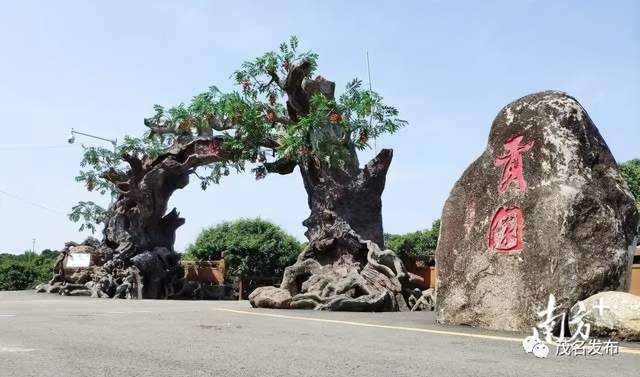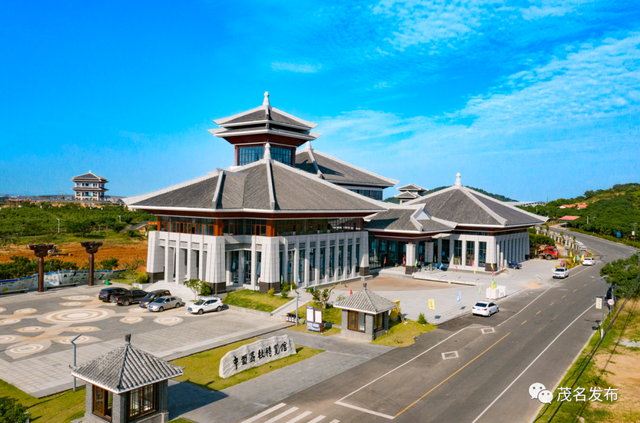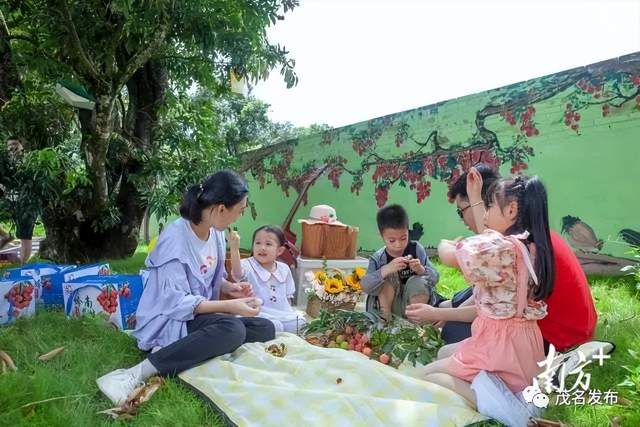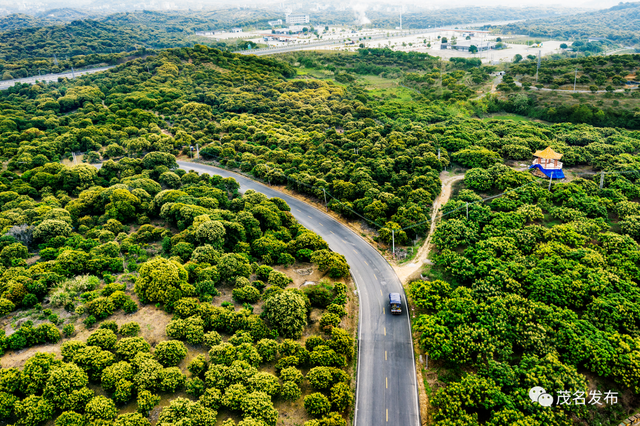Highlighting "cultural flavor", eating lychee is also eating culture | New trend of Maoming lychee industry ③
Author:Maoming released Time:2022.07.17
From the north to the south along the Bao Mao High Speed Cantonese section
More than 50 kilometers of lychee forests are hidden in the four ancient Liluo Garden of Maoming ——
Genzi Baiqiao Gu Liyuan, Gaizhou Surabaya Di Giyuan
Electric Baixia Cave Guli Garden and Monan Yangjiao Lu Duan Gu Liyuan
Thousands of years have been engraved in a tree
The vicissitudes of the ancient li tree, the stout trunk
In the annual wheel of a circle
Cumulative lychee culture
According to historian Li Juejie, Maoming has produced litchi in the late Qin and early Han Dynasty. A fruit has grown for more than 2,000 years in Maoming, and its connected region, culture, and style have already surpassed its value as the fruit itself.
The more local, the more the world. At the time of Lihong, the ancient litchi culture of Maoming blends with modern civilization. Tourists from all directions are picked up litchi, tourism and style. When eating litchi, they also taste Lingnan culture.
▲ The Gongzi Garden, known as the "Live Litchi Museum". The tree in the garden is 39 old litchi trees over 500 years old. Photo by Qiu Qian
Cultural heritage
Highlight connotation and brand value
Under the high -speed exit of Bao Mao's high -speed division, you can reach the cultural tourist area of Lixiang, Datang 2 kilometers. The newly completed China Litchi Expo in the scenic area and the litchi forests on both sides are interesting. The holographic projection of the "Datang Gongyuan" exhibition hall in the museum is restoring the story of Yang Guifei and lychee, which attracts tourists to stop.
▲ China Litchi Expo.
Maoming lychee has become a tribute, and it is inseparable from his sweet taste. There are records in the "Beihulu" of the Tang Dynasty: "The beauty of the southern fruit has litchi .... It is best for Gao Pan." Gaozhou and Panzhou are the current Maoming, which is rich in "Lizhong Jiaguo".
There are many similar records. This is a long history and rich variety of Maoming lychee planting, showing the strong cultural connotation and brand value of Maoming litchi.
▲ Lithong season, lymnicus picks fruit.
Relying on the history of the development of litchi planting for thousands of years, the Guangdong Lingnan Litchi Planting System (Maoming City) was selected into the sixth batch of important agricultural cultural heritage lists in China. On May 29 this year, the China Litchi Longan Industry Conference was held in Maoming in 2022. At the meeting, the important agricultural cultural heritage of China -Guangdong Lingnan Litchi Planting System (Zengcheng, Dongguan, Maoming), Guangdong, not only launched the brand of "Lingnan Litchi" , Spreading the Lingnan agricultural culture to the world, also brought new opportunities to the development of the litchi industry in Maoming.
Cultural carrier
Guli Shi retains nostalgia memory
Gu Lishu is a concrete carrier of culture, carrying the memory of Maoming lychee planting. To do a good job of the protection of Gu Lishu, we must hold awe, fully reflect the integrity and historical heavy sense of Gu Li Gongyuan, actively cultivate the "micro -power source", and build it into a good place to retain nostalgia.
▲ The vicissitudes of the ancient litchi tree, the stout trunk, and the annual wheel of the circle, accumulated a rich lychee culture.
According to the preliminary census, there are about 1,9400 ancient litchi trees in Maoming for more than a century. Among them, a litchi tree in Lu Duan Village, Maonan District is as high as 1935. It is far the oldest litchi tree in the world.
In recent years, Maoming has created the "Four Great Ancient Liyuan" led by Gongguan Garden. Whenever Lihong season, the ancient trees are new and fruitful. In addition, relying on the "Four Great Ancient Litchi Garden", Maoming promoted the "integrated agricultural tourism culture and innovation integration" tourist belt to form "tourism+lychee", "culture+lychee", "Kang body+lychee" and other "litchi+" integration development model The number of tourists every year exceeds 20 million.
In the ancient Liyuan of Luman, Maonan, a "from ancient times to the present" is in full swing. From the origin of lychee, evolution to modern management, more tourists can understand the cultural heritage and intelligent planting power of lychee. In addition, Maoming is fully promoting the establishment of the ancient tree identification work, so that Gu Lishu has a household registration and identity.
▲ The ancient Liyuan Garden of Beach is more than a thousand years old, and it is full of long history and culture. Each year, Lihong season attracts many tourists to enjoy Liyuan and Litchi.
Cultural renovation
"Famous and Dame" high competition
Maoming litchi has a strong story and cultural atmosphere.
How to combine these stories with local culture and use it into Maoming lychee culture brands is an important part of Maoming Litchi to the world.
In recent years, Maoming and Zhejiang University CARD China Agricultural Brand Research Center jointly planned the construction of public brands in the litchi region of Maoming, and implemented a "six unification" in the city, that is, unified "Maoming Litchi" brand, LOGO, IP image, publicity slogan, auxiliary graphics, auxiliary graphics , Outsourcing design, further integration and enhancement of the brand image of "Maoming Litchi".

On May 10th, on the sixth Chinese brand day, the "Maoming Litchi" regional public brand trademarks, Maoming lychee (fresh fruits, dried fruit) national geographical indication trademarks and the "Maoming Litchi Regional Public Brand Development Plan" was officially released. First The second declaration of "Maoming Litchi World Famous Lit" was issued.
Zhou Yerun, a researcher at the CARD China Agricultural Brand Research Center of Zhejiang University, interpreted, the brand slogan of "Maoming Litchi, World Famous Lit" expresses a high competitive attitude, effectively enhances brand competitiveness, and captures consumer minds.
Become a world famous, where is Maoming's confidence?
As the world's largest lychee production base, Maoming has a planting area of 1.35 million mu. The planting history of more than 2,000 years has also bred a unique planting, processing, regional, and human culture.
Compared with Guangzhou and Dongguan, Maoming lychee industry has a closer impact on fruit farmers' livelihood. This determines that Maoming lychee needs to become the world's fame.
Every 5 lychee worldwide is produced in Maoming. This determines that Maoming lychee has the strength to become a world fame.
"I think Maoming has led the creation of litchi cultural brands in recent years, or it should be said that Maoming is one of the most significant places for the construction of 'cultural cards'." Said Zhao Fei, associate professor of South China Agricultural University and an expert in agricultural cultural heritage research.
Reporter's note
Litchi culture needs to tell the story of Gu Lili
A litchi tree has survived the survival of 100,000 years. It is an admirable thing. During this period, countless efforts have been made. Lao Lishu has also become a testimony of historical development. It is a living antique, living cultural relics, and a living history.
On the basis of strict and scientific protection, telling the story of ancient trees and famous trees is one of the important topics in the context of rural revitalization. Maoming has about 19,400 ancient lychee trees for more than a century. It is a rare advantageous resource. It tells the story of the ancient lychee culture that is rich in Maoming lychee culture.
Text/Zou Xiangliang Zhuo Jian Si Xie Tian
Maoming released the editorial department
Edit: Zhong Zhencong
Preliminary review: Ke Zhuji
Review: Zhang Yue
Source: South+
- END -
"Lingbo Fairy" appeared in Xiong'an Baiyangdian

The picture shows the water stood on the leaf leaves. Gao Teng PhotoRecently, the ...
The opening of Huzhou Changxing Lubshan Township Huyang Food Culture Festival
Enter the sky to eat Fu sheep. On July 16th, on the first day of Fushan, the 17th ...







